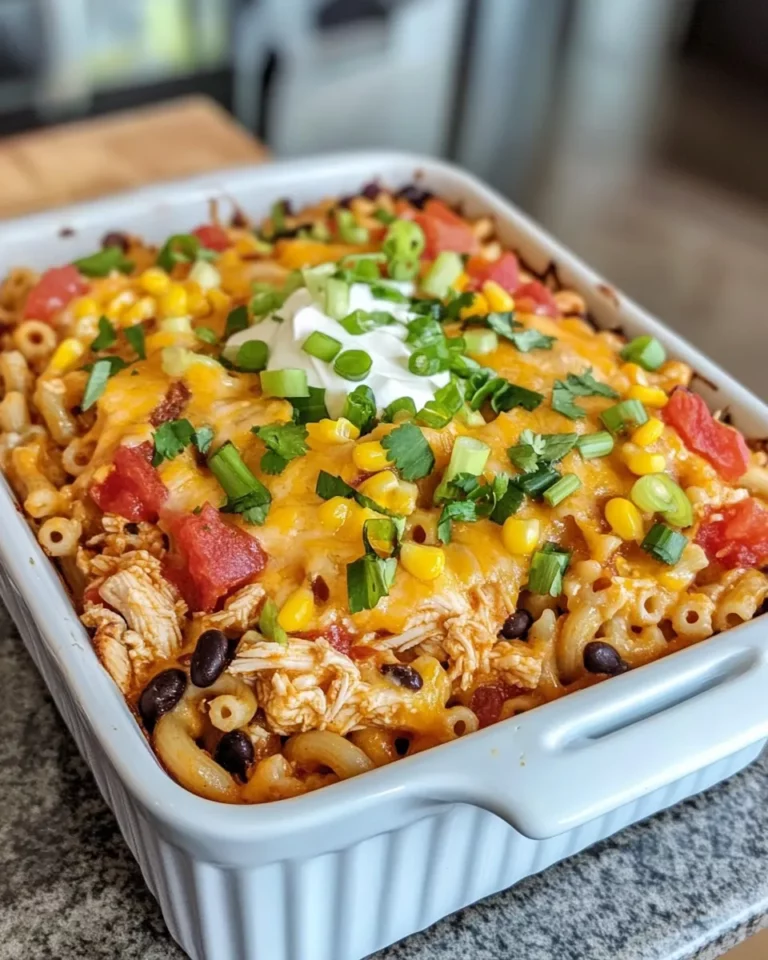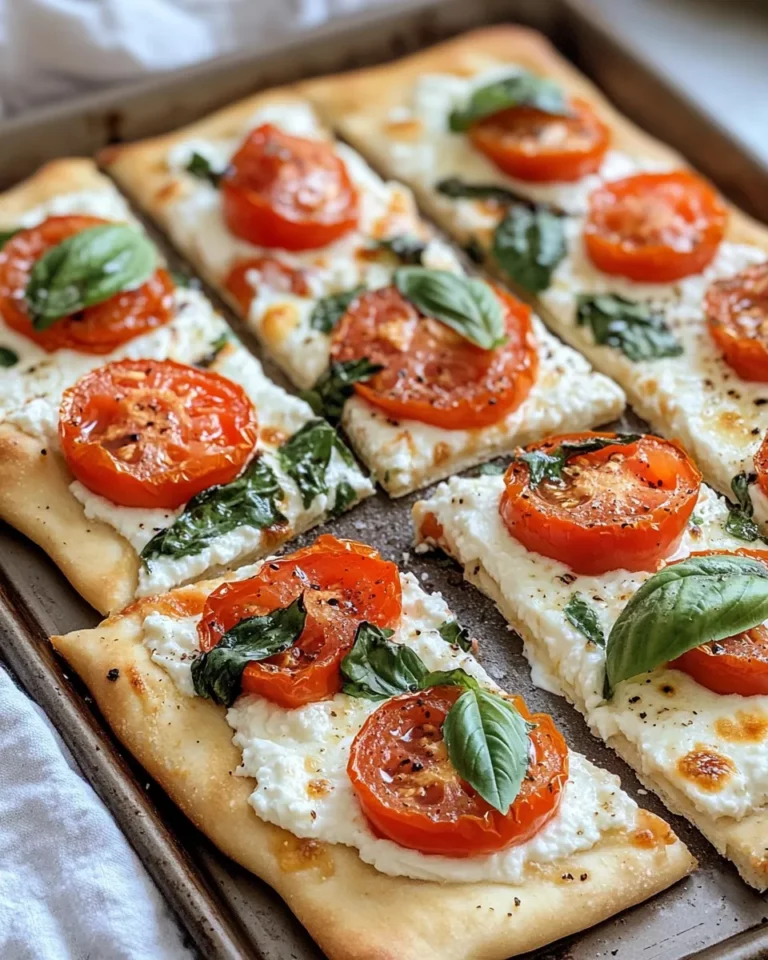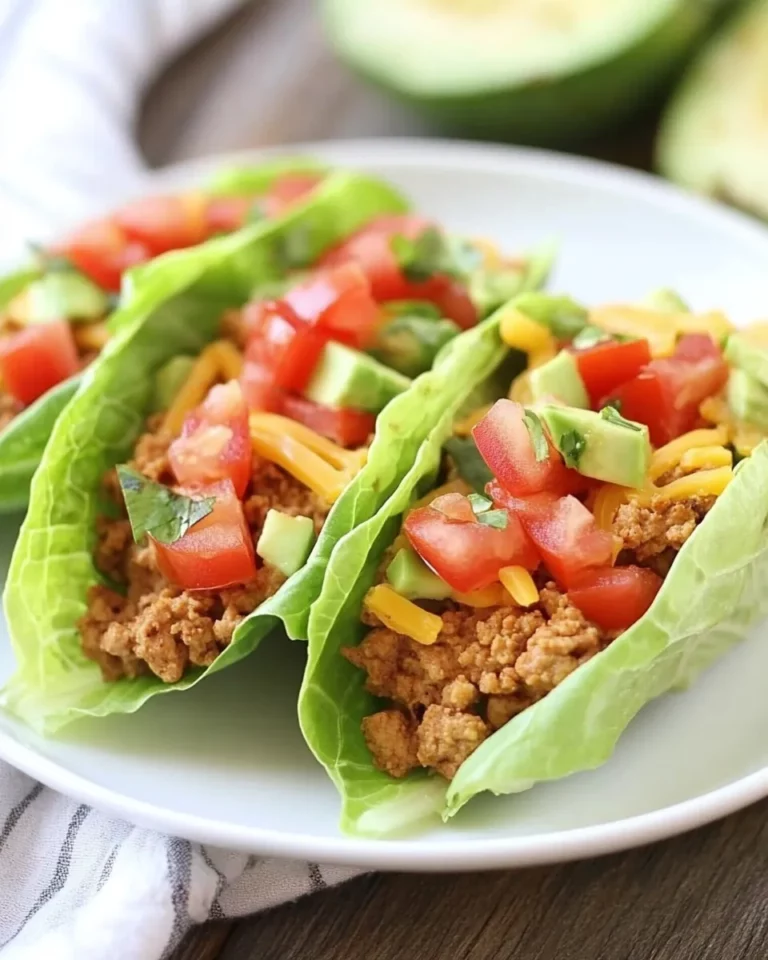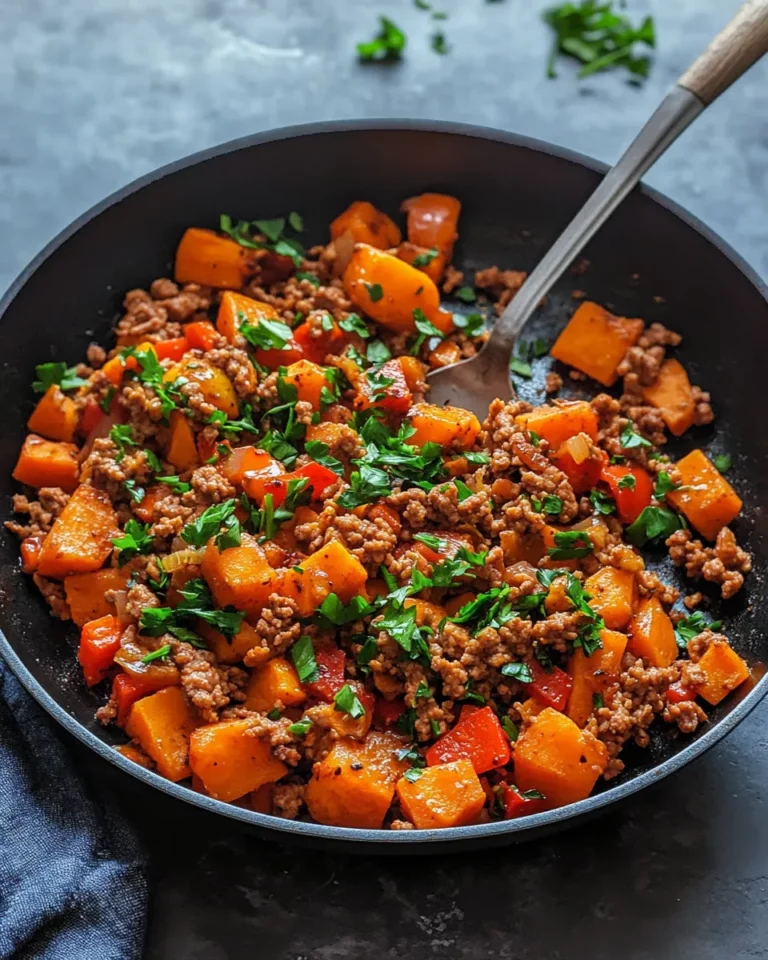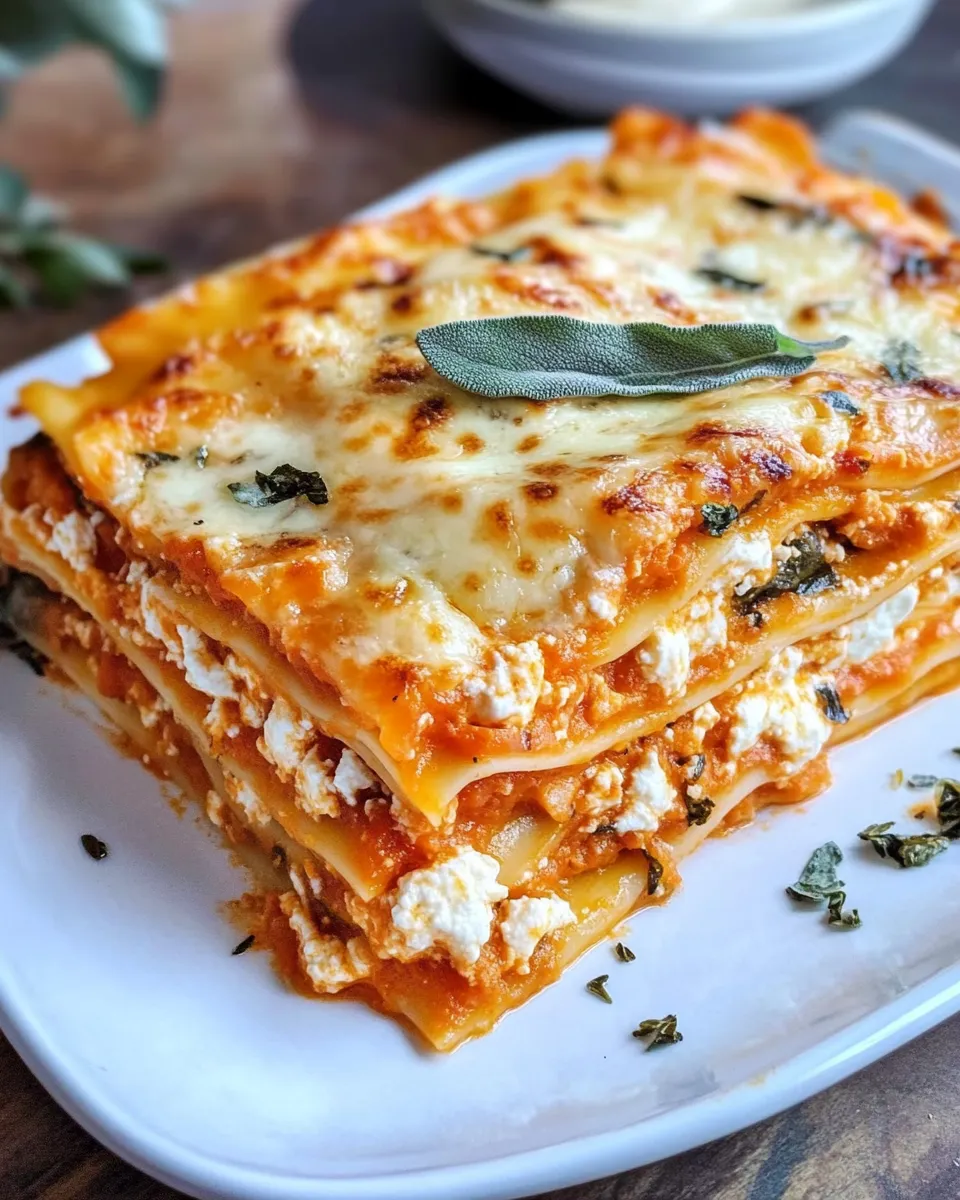
If you’re looking to elevate your weeknight dinners with a comforting yet sophisticated dish, look no further than this Butternut Squash & Sage Lasagna. This recipe blends the natural sweetness of roasted butternut squash with the earthy aroma of fresh sage, layered between tender sheets of lasagna noodles and creamy ricotta cheese. The combination is a perfect harmony of flavors and textures, making it a delightful alternative to traditional meat lasagnas. Whether you’re entertaining guests or simply craving a cozy meal, this lasagna is sure to impress.
Why It Deserves a Spot
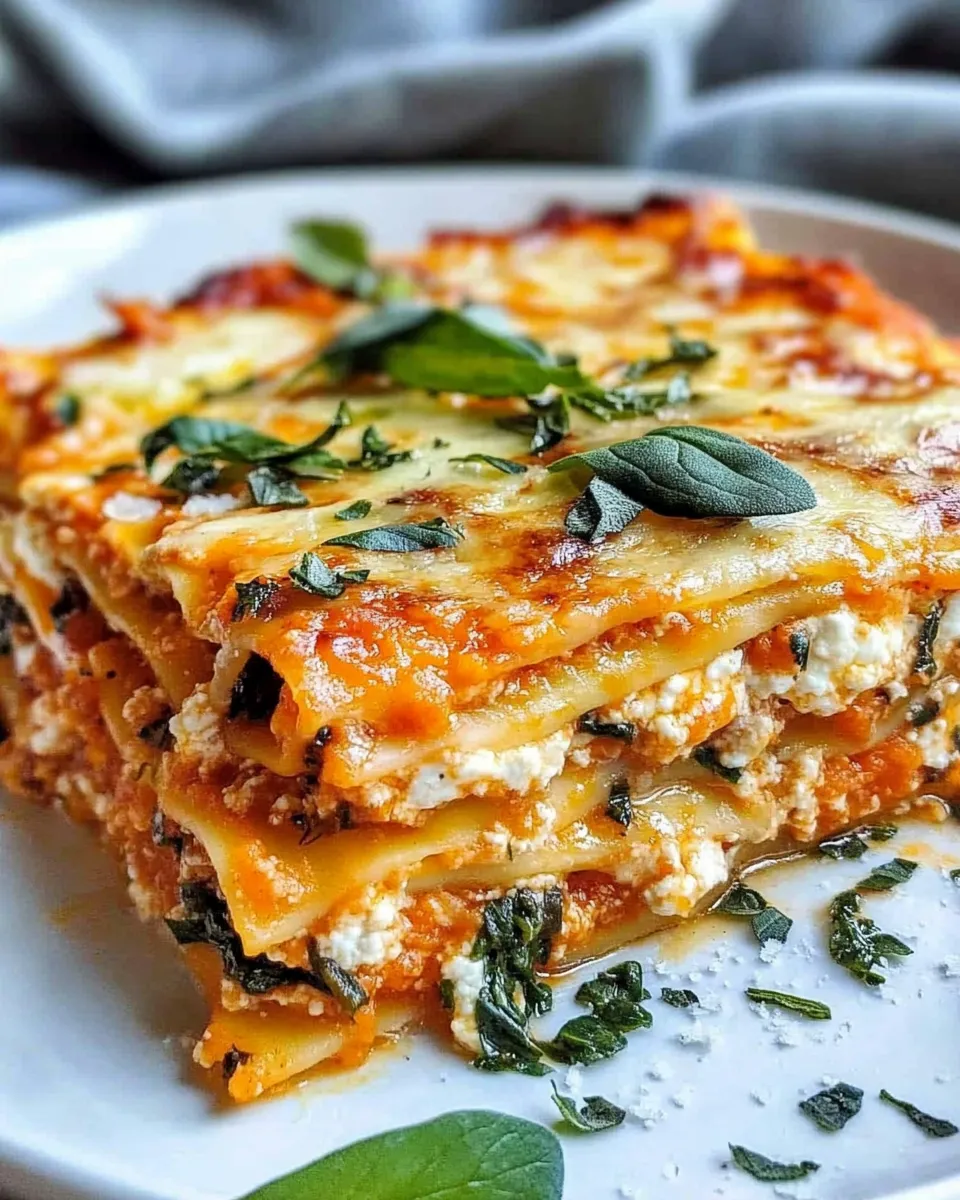
This Butternut Squash & Sage Lasagna deserves a spot in your recipe collection for several compelling reasons. First, it’s a fantastic way to enjoy seasonal produce in a hearty, satisfying form. The roasted butternut squash adds a subtle sweetness that pairs beautifully with the sharpness of Parmesan and the creaminess of ricotta and mozzarella. Fresh sage adds an aromatic depth that elevates the entire dish.
Second, it’s versatile enough to be a vegetarian main course while still feeling indulgent and rich. It’s perfect for those who want to enjoy a layered pasta dish without meat but don’t want to compromise on flavor or texture. Plus, the inclusion of spinach adds a nutritional boost, making it a well-rounded meal.
Finally, it’s simple enough to prepare on a busy day, with straightforward steps and easily accessible ingredients. If you’re a fan of recipes like Summer Squash Ricotta Lasagna, you’ll appreciate how this one brings a unique twist with butternut squash and sage.
Gather These Ingredients
- 9 lasagna noodles
- 2 cups butternut squash, peeled and cubed
- 1 cup ricotta cheese
- 2 cups shredded mozzarella cheese
- 1 cup grated Parmesan cheese
- 1 tablespoon olive oil
- 2 cloves garlic, minced
- 1 teaspoon fresh sage, chopped
- 1 teaspoon dried oregano
- Salt and pepper to taste
- 1 cup spinach, chopped
- 2 cups marinara sauce
Tools & Equipment Needed
- Large pot – for boiling lasagna noodles
- Baking dish (9×13-inch recommended) – for assembling and baking the lasagna
- Large skillet – for sautéing garlic and butternut squash
- Mixing bowl – to combine ricotta and spinach
- Measuring cups and spoons – for accurate ingredient portions
- Spatula or wooden spoon – for stirring and spreading layers
- Aluminum foil – to cover the lasagna while baking
Stepwise Method: Butternut Squash & Sage Lasagna
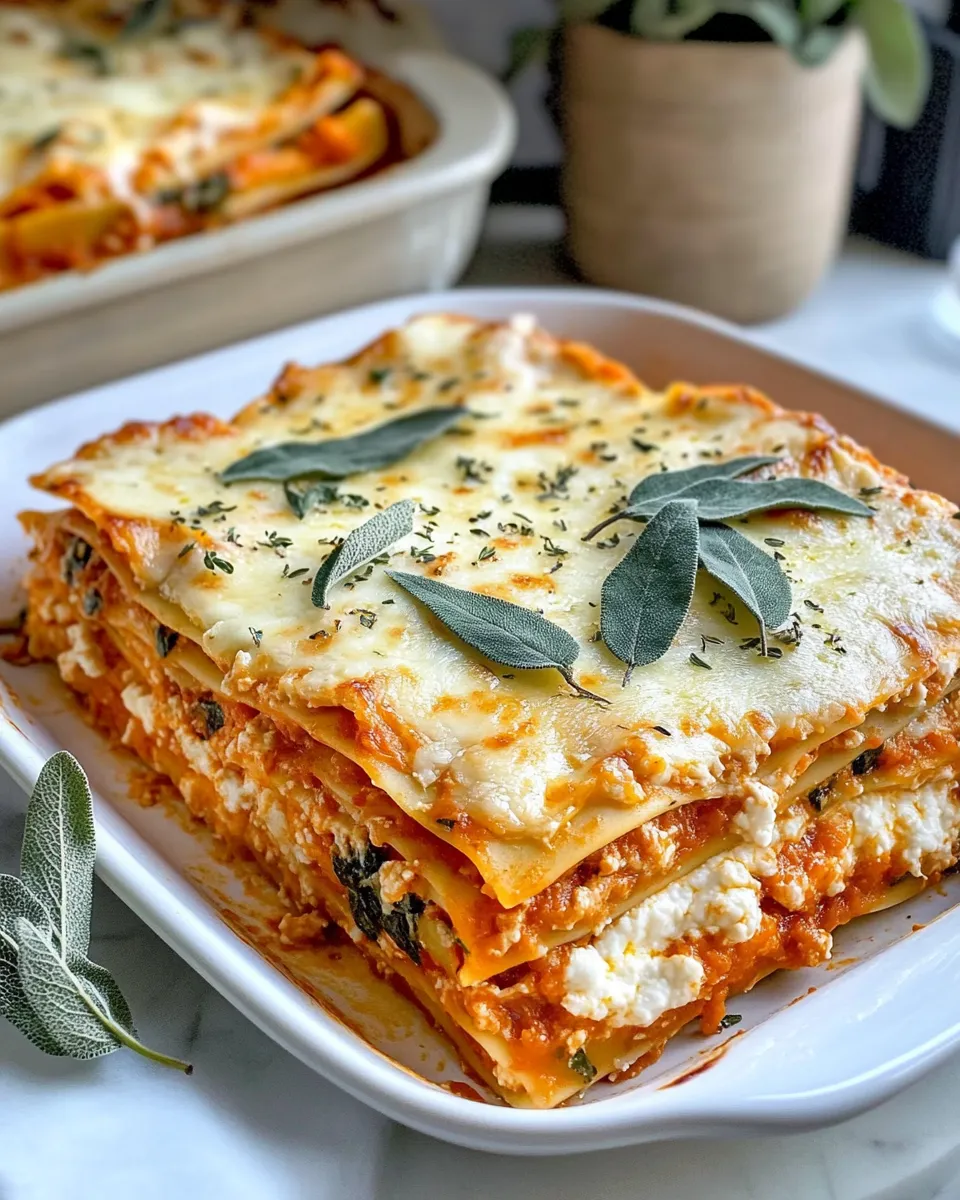
Step 1: Prepare the Butternut Squash
Start by peeling and cubing your butternut squash into bite-sized pieces. Heat the olive oil in a large skillet over medium heat. Add the minced garlic and sauté for about 1 minute until fragrant. Add the cubed butternut squash, fresh sage, dried oregano, salt, and pepper. Cook, stirring occasionally, for 8-10 minutes until the squash is tender but not mushy. Remove from heat and set aside.
Step 2: Cook the Lasagna Noodles
Bring a large pot of salted water to a boil. Add the lasagna noodles and cook according to package instructions until al dente. Drain the noodles and lay them flat on a sheet of parchment paper or drizzle a little olive oil over them to prevent sticking.
Step 3: Prepare the Cheese Mixture
In a mixing bowl, combine the ricotta cheese with the chopped spinach. Season lightly with salt and pepper. This mixture will add creaminess and a fresh green element to your lasagna layers.
Step 4: Assemble the Lasagna
Preheat your oven to 375°F (190°C). In your baking dish, spread a thin layer of marinara sauce to prevent sticking. Lay down 3 lasagna noodles. Spread half of the ricotta-spinach mixture over the noodles. Add half of the sautéed butternut squash on top, then sprinkle with a third of the shredded mozzarella and a little Parmesan. Pour a layer of marinara sauce over this.
Repeat the layers: noodles, ricotta-spinach, butternut squash, mozzarella, Parmesan, and marinara sauce. Finish with a final layer of noodles, remaining marinara sauce, and the remaining mozzarella and Parmesan cheese.
Step 5: Bake
Cover the dish tightly with aluminum foil and bake for 25 minutes. Then, remove the foil and bake for an additional 15 minutes or until the cheese on top is bubbling and golden brown.
Step 6: Rest and Serve
Let the lasagna rest for about 10 minutes before slicing. This helps the layers set and makes serving easier. Pair it with a crisp green salad or try it alongside a Harvest Salad With Butternut Squash for a meal that’s both comforting and balanced.
Texture-Safe Substitutions
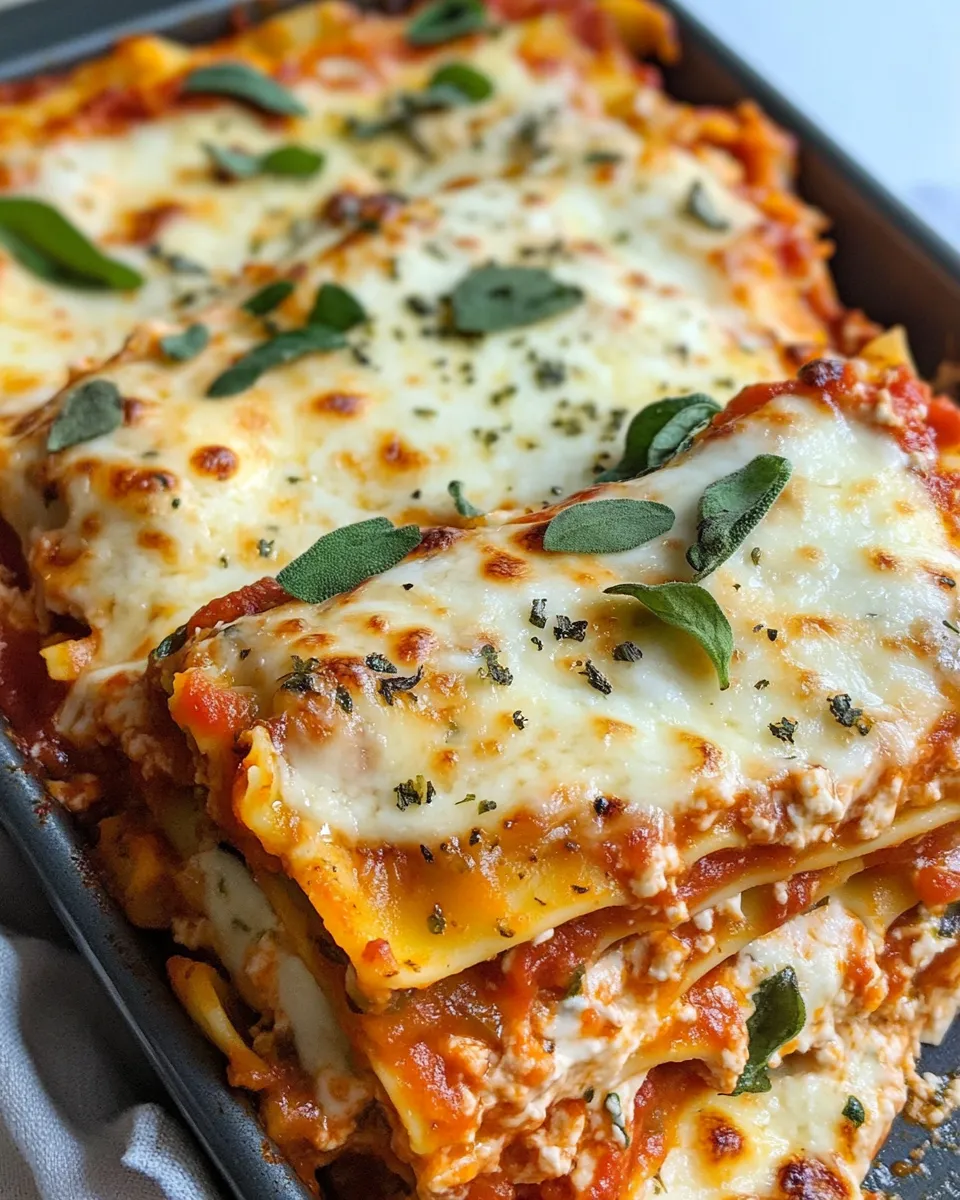
- If you prefer a smoother texture, you can roast the butternut squash and mash it slightly before layering.
- Use cottage cheese instead of ricotta for a lighter texture.
- Replace spinach with kale or Swiss chard for a heartier green.
- Swap out regular lasagna noodles for no-boil noodles to save time.
- Use a dairy-free cheese blend if you’re looking for a vegan-friendly alternative.
Mistakes That Ruin Butternut Squash & Sage Lasagna
- Overcooking the butternut squash can make the layers mushy and watery.
- Not seasoning the ricotta mixture properly can result in a bland lasagna.
- Skipping the resting time after baking may cause the lasagna to fall apart when slicing.
- Using too much marinara sauce can make the lasagna soggy.
- Failing to spread the sauce evenly between layers may cause uneven cooking.
Best Ways to Store
Once cooled, cover the leftover lasagna tightly with plastic wrap or foil and store it in the refrigerator for up to 3 days. For longer storage, slice the lasagna into individual portions and freeze them in airtight containers or freezer bags. Frozen lasagna will keep well for up to 3 months. To reheat, thaw overnight in the fridge and warm in the oven at 350°F (175°C) until heated through, or heat directly from frozen, adding extra time.
Butternut Squash & Sage Lasagna Q&A
Can I prepare this lasagna in advance?
Absolutely! You can assemble the lasagna a day ahead, cover it with foil, and refrigerate. When ready, bake as directed, adding an extra 5-10 minutes if baking cold from the fridge.
Is it possible to make this recipe gluten-free?
Yes, simply substitute the traditional lasagna noodles with gluten-free lasagna noodles. Make sure to check that all other ingredients, like marinara sauce and cheeses, are gluten-free as well.
Can I add other vegetables to this lasagna?
Definitely. Adding mushrooms, zucchini, or bell peppers can enhance the flavor and texture. Just sauté them along with the butternut squash for the best results.
What’s the best way to reheat leftover lasagna?
Reheat leftovers in the oven at 350°F (175°C) covered with foil to prevent drying out. You can also microwave individual portions, but the oven method maintains the best texture.
Keep Cooking
- Harvest Salad With Butternut Squash – A perfect side to complement your lasagna meal.
- Summer Squash Ricotta Lasagna – Another vegetable-packed lasagna to try when you want a lighter alternative.
- Roasted Butternut Squash Recipes – Explore more ways to enjoy this versatile squash.
The Takeaway
Butternut Squash & Sage Lasagna is a wonderful blend of sweet, savory, and creamy elements wrapped up in a classic Italian favorite. Its layers of roasted squash, fragrant sage, and luscious cheeses create a dish that feels special yet is simple to make. Whether you’re serving it for a family dinner or a holiday gathering, it’s sure to become a beloved recipe in your rotation. Don’t hesitate to experiment with substitutions and additions to make it your own. This lasagna is not just a meal; it’s a celebration of seasonal ingredients and timeless comfort food. Enjoy every bite!
Share on Pinterest
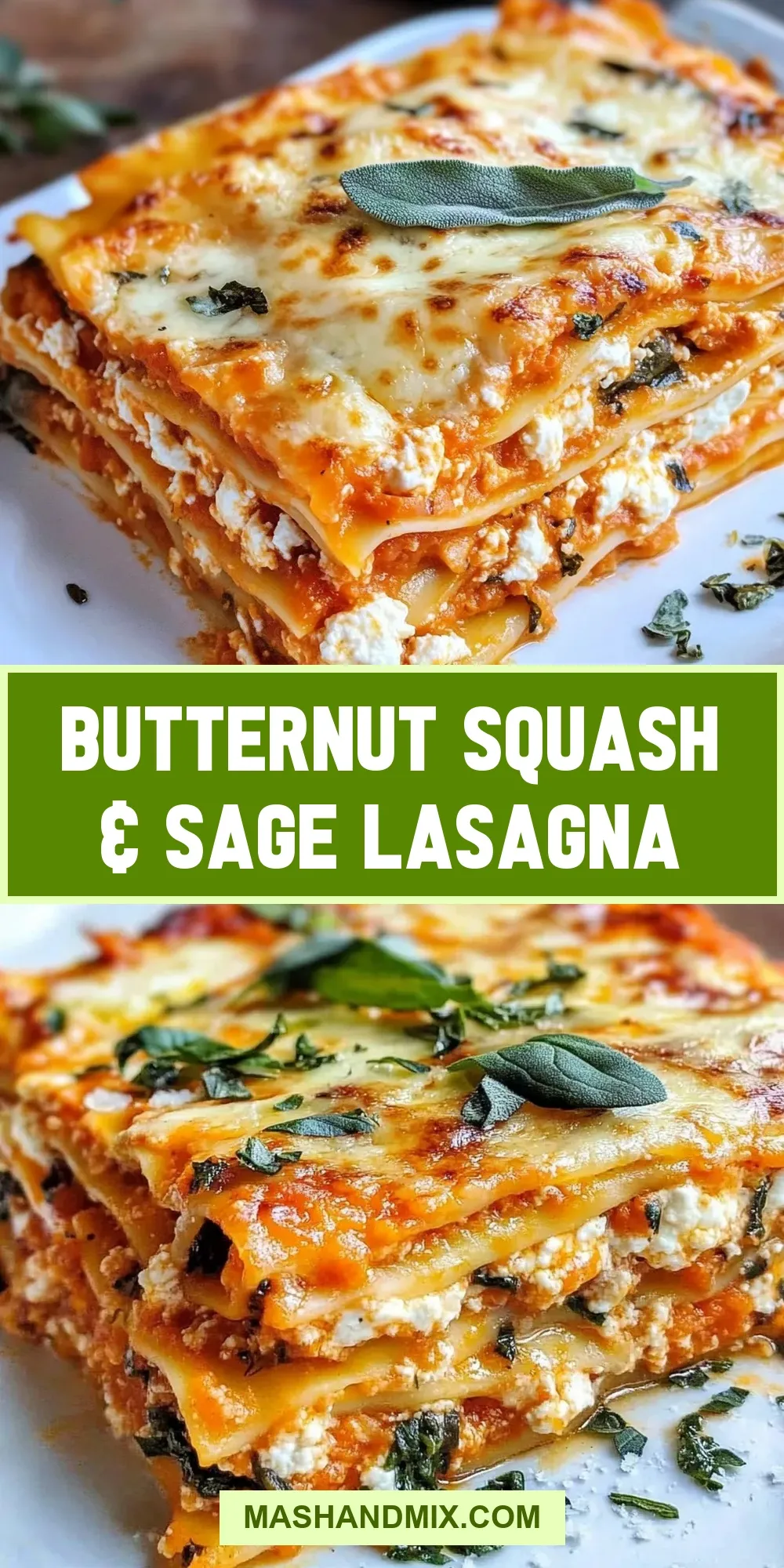

Butternut Squash & Sage Lasagna
Ingredients
- 9 lasagna noodles
- 2 cups butternut squash peeled and cubed
- 1 cup ricotta cheese
- 2 cups shredded mozzarella cheese
- 1 cup grated Parmesan cheese
- 1 tablespoon olive oil
- 2 cloves garlic minced
- 1 teaspoon fresh sage chopped
- 1 teaspoon dried oregano
- Salt and pepper to taste
- 1 cup spinach chopped
- 2 cups marinara sauce
Instructions
Step 1: Prepare the Butternut Squash
- Peel and cube the butternut squash into bite-sized pieces. Heat olive oil in a large skillet over medium heat. Add minced garlic and sauté for about 1 minute until fragrant. Add cubed butternut squash, fresh sage, dried oregano, salt, and pepper. Cook, stirring occasionally, for 8-10 minutes until tender but not mushy. Remove from heat and set aside.
Step 2: Cook the Lasagna Noodles
- Bring a large pot of salted water to a boil. Add lasagna noodles and cook according to package instructions until al dente. Drain noodles and lay them flat on parchment paper or drizzle with olive oil to prevent sticking.
Step 3: Prepare the Cheese Mixture
- In a mixing bowl, combine ricotta cheese with chopped spinach. Season lightly with salt and pepper.
Step 4: Assemble the Lasagna
- Preheat oven to 375°F (190°C). Spread a thin layer of marinara sauce in the baking dish. Lay down 3 lasagna noodles. Spread half of the ricotta-spinach mixture over noodles. Add half of the sautéed butternut squash on top, then sprinkle with a third of shredded mozzarella and a little Parmesan. Pour a layer of marinara sauce over this.
- Repeat layers: noodles, ricotta-spinach, butternut squash, mozzarella, Parmesan, and marinara sauce. Finish with a final layer of noodles, remaining marinara sauce, and remaining mozzarella and Parmesan cheese.
Step 5: Bake
- Cover the dish tightly with aluminum foil and bake for 25 minutes. Remove foil and bake an additional 15 minutes or until cheese on top is bubbling and golden brown.
Step 6: Rest and Serve
- Let the lasagna rest for about 10 minutes before slicing to help layers set. Serve with a crisp green salad or a harvest salad with butternut squash.
Equipment
- Large Pot
- Baking dish (9x13-inch recommended)
- Large Skillet
- Mixing Bowl
- Measuring cups and spoons
- Spatula or wooden spoon
- Aluminum Foil
Notes
- If you prefer a smoother texture, roast and mash the butternut squash before layering.
- Use cottage cheese instead of ricotta for a lighter texture.
- Substitute spinach with kale or Swiss chard for a heartier green.
- Swap regular lasagna noodles for no-boil noodles to save time.
- Use dairy-free cheese blends for a vegan-friendly alternative.

